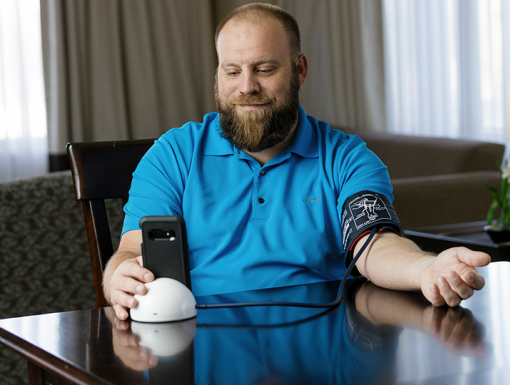
Taking Control: A Simple Guide to Managing Blood Pressure in 2025
High blood pressure, also known as hypertension, is a widespread health concern affecting millions of people around the world. One in three American adults has high blood pressure —that’s roughly 40% of the population of Louisiana, Mississippi and Alabama. The condition crosses all demographics, and even children can develop it.
High blood pressure sometimes shows no obvious symptoms, can develop slowly over time, and is often misunderstood. However, it is not a condition to be taken lightly. Uncontrolled high blood pressure can lead to heart attack, stroke, heart failure, aneurysms, weakened and narrow blood vessels in the eyes, kidney failure, and trouble with memory or understanding.
But you can protect yourself by knowing the signs, symptoms and risk factors of high blood pressure.
The best way to watch out for high blood pressure is to regularly check your readings and know your blood pressure numbers. Routine home monitoring can help detect high blood pressure early on and prevent the long-term effects of uncontrolled blood pressure. It also allows you to track your blood pressure over time in addition to regular office visits.
If you have recently been diagnosed with this condition, awareness of these factors will make it easier for you to effectively manage your high blood pressure with intentional lifestyle changes.
What is blood pressure and when does it become risky?
Understanding what blood pressure is and when it becomes a danger is the first step towards gaining control.
In simple terms, blood pressure is the force of blood against your artery walls as it circulates throughout your body. It can be easily measured by a blood pressure cuff and is divided into two numbers:
- Systolic pressure (the top, higher number) measures blood pressure during heartbeats.
- Diastolic pressure (the lower, bottom number) measures blood pressure between heartbeats.
Consistently elevated blood pressure makes your heart and blood vessels work harder to do their job, becoming less efficient. Also, the force and friction of the pressure damage the tissue inside your arteries, which leads to tiny tears. Plaque can build up in these tears, narrowing the inside of the arteries. This can lead to “blockage.”
Blood Pressure Levels (by millimeters of mercury) |
|
Normal |
Systolic: less than 120 mmHg Diastolic: less than 80 mmHg |
At risk (prehypertension) |
Systolic: 120-139 mmHg Diastolic: 80-89 mmHg |
High |
Systolic: 140 mmHg or higher Diastolic: 90 mmHg or higher |
How is High Blood Pressure Treated?
If your doctor diagnoses you with high blood pressure, they may prescribe medications to lower it. There are many kinds of prescription blood pressure medications. You may need more than one type of prescription medication to effectively lower blood pressure.
But medication is just one part of the solution. Lifestyle changes can be just as effective and are often necessary to manage high blood pressure. These changes can include reducing sodium intake, incorporating regular exercise into your routine, losing weight if you're overweight, and following a DASH diet.
Even if lifestyle changes are applied, medications may still be necessary to achieve and maintain blood pressure control.
But what more can you do to manage your high blood pressure? Here are some additional steps:
- Take your medication as directed. Don’t skip doses. If side effects become a problem or the medication cost is too high, speak with your healthcare provider. They can often find a less expensive option or an alternative that won't cause the same side effects. Ochsner Digital Medicine is a remote management program that pairs you with a licensed clinician who can adjust your medications as needed and help to support your treatment regimen.
- Regularly take our own blood pressure and keep a record. Today, there are digital blood pressure cuffs that measure your blood pressure and send the data directly to your health record for your doctor to review. The Ochsner Digital Medicine program provides these devices to enrolled members, so that you have a team monitoring your progress.
- Maintain a healthy lifestyle that includes regular exercise and a balanced diet. Digital Medicine offers a panel of expert health coaches to help you design a healthy living plan that suits your needs.
Controlling high blood is about making a commitment to your overall health. By taking these steps, you can manage your high blood pressure and lead a healthier, longer life.
Your heart will thank you when you enroll in Ochsner Digital Medicine. Join today.



